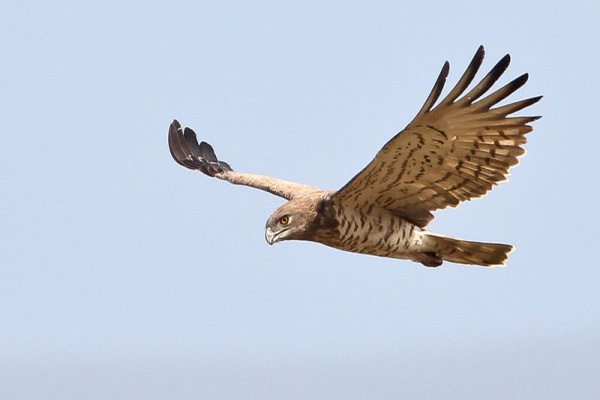Facts About Short-toed snake eagle
The short-toed snake eagle, also known simply as the short-toed eagle, is a fascinating bird of prey from the Accipitridae family. Its scientific name, Circaetus gallicus, combines ancient Greek words for hawk (kirkos) and eagle (aetos), while "gallicus" means "from Gaul."
These eagles can be found over a vast range, from the Mediterranean basin to parts of Russia, the Middle East, Western Asia, the Indian Subcontinent, and some Indonesian islands. They migrate to sub-Saharan Africa from northern Mediterranean regions around September and October, returning in April and May. In contrast, those in the Middle and Far East tend to remain in their habitats year-round.
These birds favor environments such as open plains, arid scrublands, foothills, and semi-deserts. They require trees for nesting and open spaces for hunting. Adult short-toed snake eagles are medium-sized, measuring about 62–67 cm in length with a wingspan of 170–185 cm. They weigh between 1.2 and 2.3 kg. They can be identified by their mostly white undersides, greyish-brown upper parts, pale chin, throat, and upper breast. Their tail features three or four bars, and they have an owl-like rounded head with bright yellow eyes and lightly barred underwings.
Unlike some of their relatives, these eagles spend much time soaring, frequently hunting at altitudes up to 500 meters. Their diet primarily consists of reptiles—especially snakes—but they also eat lizards, small mammals, birds, and large insects. Generally silent, they might occasionally produce musical whistling sounds. During breeding, they typically lay one egg, and they can live up to 17 years.
Unfortunately, these eagles have experienced a significant decline in Europe due to changes in agriculture and land use, making them rare in several countries. Conservation efforts are crucial to protect them. However, in the Middle and Far East, the short-toed snake eagle is not currently at risk.
Interestingly, historical observations by Buffon noted that these eagles, when kept in captivity, would eat mice and frogs. Known as Jean-de-blanc to French farmers, they were notorious for raiding poultry yards.

 Bosnia and Herzegovina
Bosnia and Herzegovina